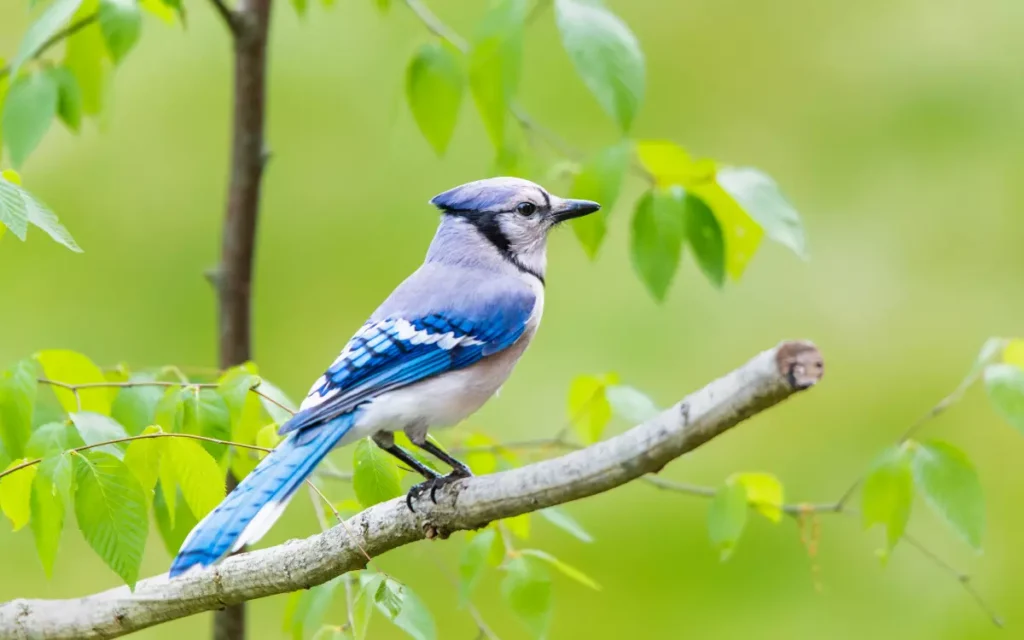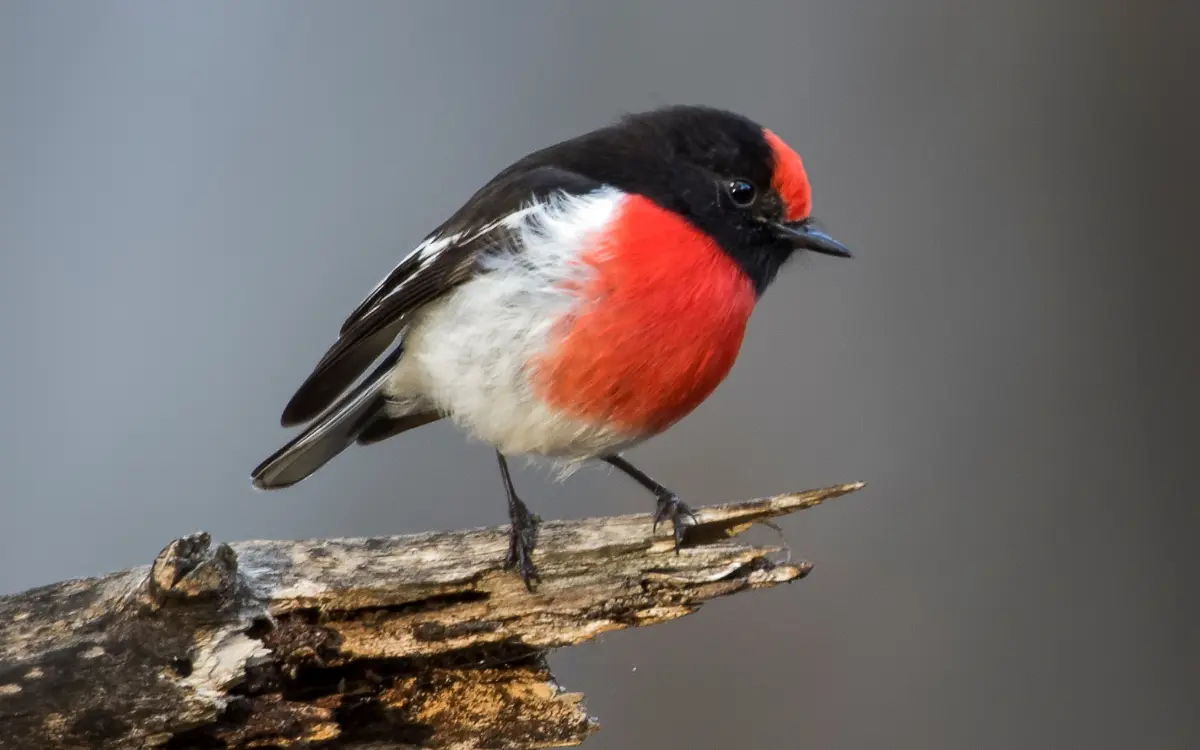Blue jay vs Cardinal: Key Difference
Blue Jays and Northern Cardinals are two of the most recognizable backyard birds in North America. Both stand out with their bold colors and lively personalities, but they’re very different once you look closer.
Here’s a full comparison of Blue Jays and Cardinals covering appearance, habitat, behavior, diet, and symbolism so you’ll always know which one you’re looking at.
Physical Characteristics
Blue Jays
Blue Jays measure 9 to 12 inches in length, making them medium-sized songbirds. Their plumage is a striking mix of bright blue, black, and white, with pale underparts. The crest on top of their head is one of their most recognizable features, which they raise or lower depending on mood.
Juvenile Blue Jays look similar to adults but are duller in color until their feathers mature.
Cardinals
Northern Cardinals are slightly smaller, about 8 to 9 inches long. Males are famous for their brilliant red feathers, while females are softer brown with reddish accents on their wings, tail, and crest. Both sexes have short, cone-shaped orange bills built for cracking seeds.
For another side-by-side comparison, see our guide on Blue Jay vs Bluebird.
Habitat and Distribution
Blue Jays:

Adaptable and widespread, Blue Jays thrive in forests, woodlands, and suburban neighborhoods with mature trees. Their range extends throughout the eastern and central U.S. and into southern Canada.
Read also:- Blue Jay Spiritual Meaning: Symbolism and Love Revealed
Cardinals:

Cardinals prefer dense vegetation, shrubs, and wood edges where they can perch and stay hidden. They’re also common in gardens and backyards. Their range covers much of North America, and unlike some other songbirds, they don’t migrate, staying year-round even in colder regions.
Diet and Feeding Habits
Blue Jays
Blue Jays have a varied diet. They eat acorns, peanuts, sunflower seeds, corn, insects, and occasionally eggs or nestlings. With strong beaks, they can crack tough shells, and they’re known to cache food for later use.
Cardinals
Cardinals are primarily seed-eaters. They love sunflower seeds, safflower, and millet, but also eat fruits and insects. Their thick beaks are perfectly adapted to crushing seeds at backyard feeders.
If you’re interested in other feeder-friendly species, see our article on Birds That Drink Nectar from Hummingbird Feeders.
Vocalizations
Blue Jays are versatile vocalists. Their calls range from harsh “jay-jay” screams to softer whistles, and they can mimic hawks and even mechanical sounds.
Cardinals, by contrast, have a sweet, whistled song often described as “cheer-cheer-cheer” or “birdie-birdie-birdie.” Males sing most often, especially during breeding season.
For a closer look at mimicry in action, compare Blue Jays vs Mockingbirds.
Mating and Nesting
Blue Jays form long-term pair bonds. Both parents help build a nest of twigs and bark high in trees, where the female lays 3–6 spotted eggs.
Cardinals are also monogamous. The female builds the nest, usually in dense shrubs or trees, while the male defends the territory and feeds her during incubation. Cardinals typically raise 2–3 broods each year.
For species that commonly use birdhouses, check out our guide on Attract Nesting Birds.
Social Behavior
Blue Jays are social and often seen in small flocks. They can be aggressive, especially at feeders or when defending their nests.
Cardinals are more reserved. They are usually seen in pairs, with males defending their territory by chasing rivals and even attacking their reflections.
If you want to see both species together, they are common among Backyard Birds in Texas.
Predators and Threats
Both birds face similar predators, including hawks, owls, and snakes. Blue Jays rely on loud alarm calls and mobbing behavior to drive threats away, while Cardinals stay hidden in dense vegetation to avoid detection.
Symbolism and Meaning
Blue Jays are often seen as symbols of intelligence, boldness, and communication, reflecting their loud calls and problem-solving skills. For a deeper look, see Blue Jay Spiritual Meaning.
Cardinals symbolize love, vitality, and hope. Many believe their presence is a spiritual message, especially after the loss of a loved one. More on this in our guide to Cardinal Symbolism.
FAQs
What’s the main difference between Blue Jays and Cardinals?
Blue Jays are blue, crested, and larger, while Cardinals are red, slightly smaller, and cone-billed.
Do Blue Jays and Cardinals live in the same areas?
Yes. Both are widespread across North America and often share backyards.
Which bird is louder?
Blue Jays are noisier, with harsh calls and mimicry. Cardinals sing sweeter, whistled songs.
Are Blue Jays more aggressive than Cardinals?
Yes. Blue Jays defend territory and feeders more aggressively, while Cardinals rely more on displays and songs.
What do they eat?
Blue Jays eat acorns, seeds, nuts, insects, and sometimes eggs. Cardinals mainly eat seeds, fruits, and insects.
Conclusion
Blue Jays and Cardinals may both brighten your backyard with vibrant color, but their differences are clear once you know what to look for. Jays are larger, louder, and more assertive, while Cardinals are smaller, gentler, and often symbolic of love and faith.
If you enjoyed this comparison, you may also like:






